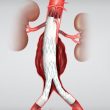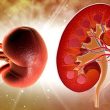Tricuspid regurgitation (TR) is difficult to manage and is a mortality predictor. At present, surgery is recommended, even though its mortality rate is not low. Endovascular intervention of this entity is currently being developed and according to the European guidelines, it has evidence level IIb C in symptomatic inoperable patients. The TriCLASP included 74 patients...
5-year TVF and MACCE in patients with deferred of revascularization after FFR: Is FFR enough?
Fractional flow reserve (FFR) has been shown effective and safe by different studies, yet not at 5 years. The aim of this multicenter registry was to assess the impact of thrombotic risk (as per CREDO-Kyoto score) as a predictor of cardiovascular events at 5 years in patients with deferred revascularization after FFR measurement. The score...
Drug Eluting Stents: Does Strut Size Matter?
The benefit of first-generation Drug-Eluting Stents (DES) over Bare Metal Stents (BMS) is largely known. Moreover, technological developments have led to reduced strut size, biodegradable polymers, and new scaffolds, which in turn have led to improved outcomes. These are known as ultrathin stents, and its struts measure between 70 and 100 microns, which contributes to...
08/03 | LATAM Network of Interventional Women: 4 Simultaneous Educational Activities!
SOLACI and the Latin American Interventional Women Group (Grupo MIL) continue to promote continuing medical education, in this case with four simultaneous activities organized with Medtronic and aimed at female interventional specialists. In this one-of-a-kind session, participants will have the opportunity to discuss clinical data and procedural techniques with experts. The event will be held on...
Fenestrated Endografts as Treatment for Type I Endoleak: What is the Price of Success?
Both fenestrated and branched endografts are effective to treat patients after failure of their initial endograft due to significant type I endoleak. This situation is costly both because of the devices themselves, and also due to the several endovascular and surgical procedures required. Failure of an endograft to treat an infrarenal abdominal aortic aneurysm due to...
ST-Segment Elevation Infarction After TAVR: Problems in Every Aspect
For interventional cardiologists, treating an ST-segment elevation infarction in a patient with transcatheter aortic valve replacement (TAVR) is challenging in many ways. Longer door-to-balloon times and higher rates of primary angioplasty failure than in the general population are translated into very high short- and mid-term mortality. This multicenter study, recently published in JACC, included 118 patients...
Intravascular Imaging: A Universal Approach for Angioplasty Optimization
Despite robust information supporting the use of intravascular imaging during coronary angioplasty, its use in clinical practice remains low. This paper proposes using an algorithm for decision-making throughout the procedure to promote increased intravascular imaging use. Regardless of the many technologies that have been incorporated into strut design struts and polymer type, the rate of...
SOLACI PERIPHERAL | 5th Clinical Case: Abdominal Aortic Aneurysm with Hostile Neck
New clinical case from SOLACI PERIPHERAL! This time, we present a case featuring an abdominal aortic aneurysm with hostile neck. With this, we wrap up an intense year during which we published 5 clinical cases to deepen and stimulate the exchange between Latin American interventionist colleagues. Tell us what you think about this case using...
EuroPCR 2020 | Sudden Death Increase Two to Three Times While MI Rate Falls
The number of sudden deaths reported around the world is on the rise in Covid-19 times. These deaths are caused either by the virus and its capacity to produce lethal arrhythmias or by the fact that patients are staying away from hospitals and are not being examined. Cardiologists were the first to warn that the...
A New Molecule to Prevent Contrast-Induced Kidney Injury
Administrating Recombinant Human C1-Esterase-Inhibitor (rhC1INH) before coronary angiography might mitigate contrast induced kidney injury. In addition, it shows a favorable safety profile in populations with multiple comorbidities. The contrast material used in all our diagnostic tests and therapeutic procedures causes tubular cytotoxicity and ischemia/reperfusion injury. rhC1INH had been effective at mitigating this mechanism in experimental...









